The sun is up in spring and summer when many plants and trees bear flowers. It's the time of year also when pollen and other air contaminants move around so rapidly because of the wind, causing allergic reactions in many people. If you dread seasonal allergies, you'll most likely opt to keep the windows shut and turn on your air conditioner. Wondering if pollen can come through your AC? We rounded up relevant information for you!
Pollen can certainly come through an air conditioner with clogged filters. Air conditioners come with filters to purify the air that circulates in our homes; however, over time, dirt and pollutants settle on the surface of these filters. Therefore, they should undergo regular cleaning to ensure that what we breathe has little to no allergy-inducing particles.
Air conditioners do their job efficiently when given regular maintenance. Manufacturers design ACs with state-of-the-art technology to filter out air impurities to give us the ideal climate and respite inside our homes. However, if filtration is compromised, unwanted air contaminants can invade our indoor space. So stick around to know more about keeping your home safe from pollen, pollutants, and particles!
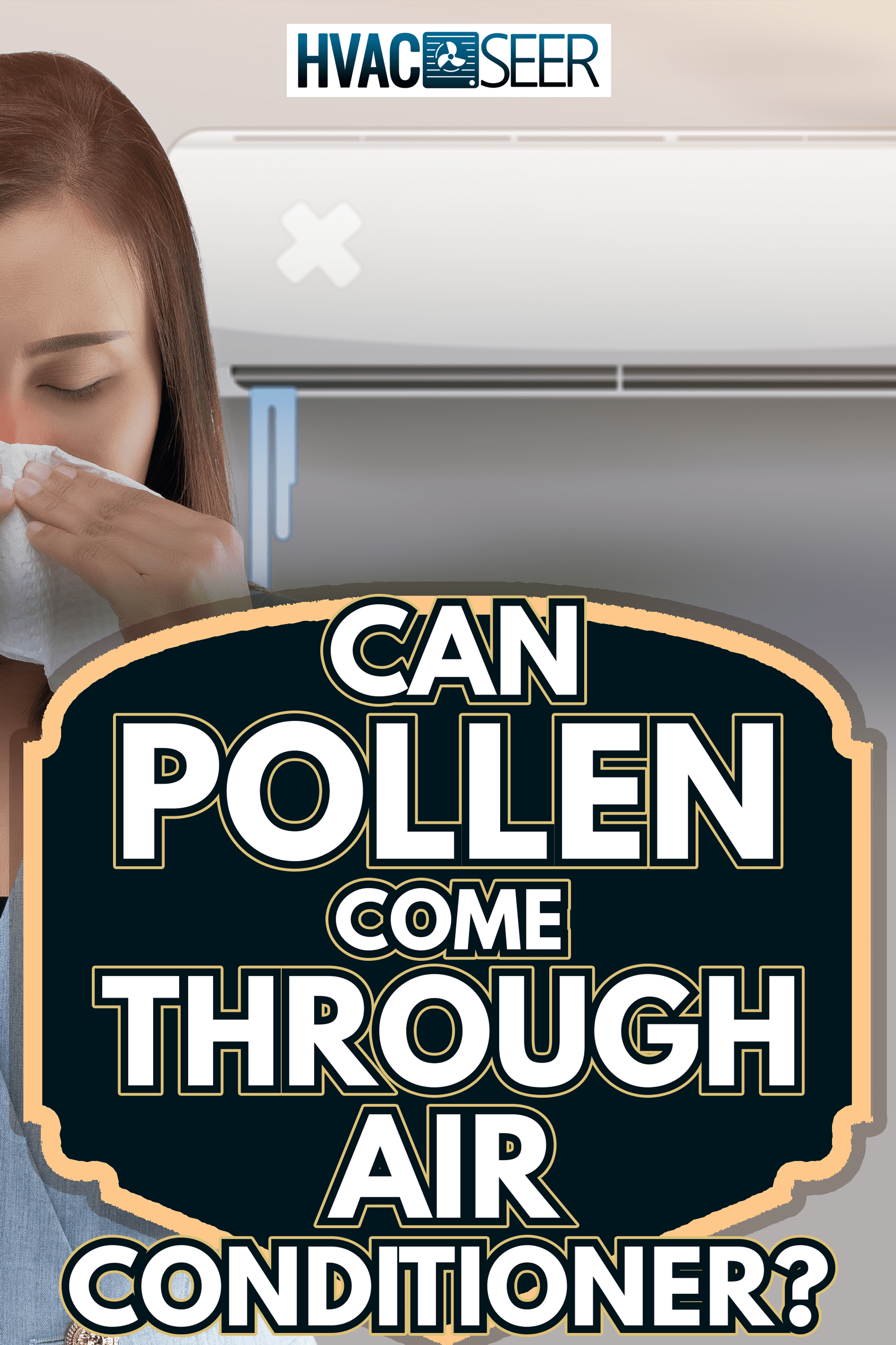
What is Pollen as an Allergen?
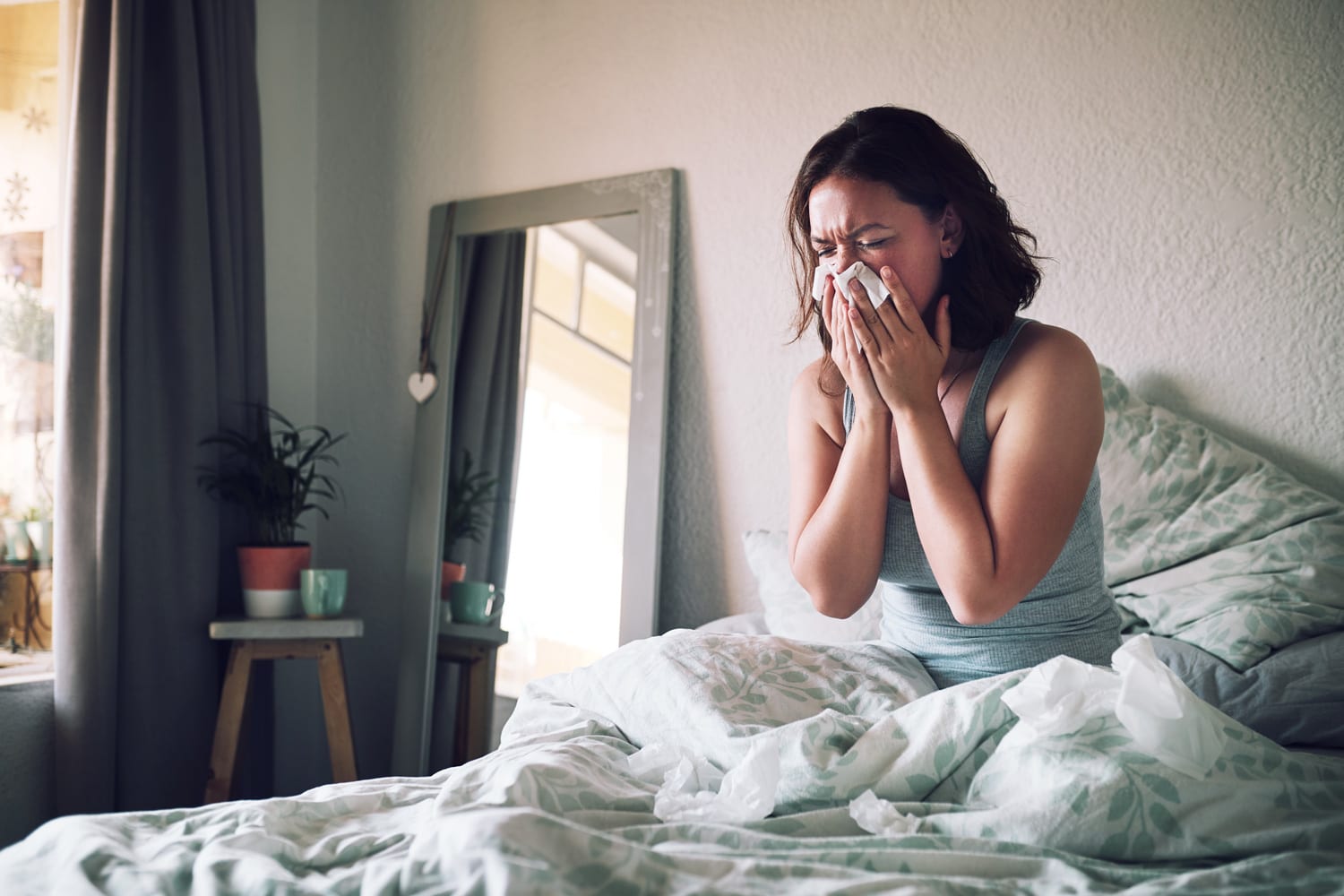
Pollen, a form of allergen, is a very fine powder that originates from plants and trees. It is responsible for fertilizing other plants of the same species. Sources such as wind, birds, insects, and other pollinators, transport pollen. When the wind disperses pollen grains, these particles can find their way into our system through the eyes and nose.
Besides pollen, environmental allergens that can come through an AC include dust mites, mold, and pet dander. When these air contaminants get inside the house, ACs can cause them to circulate and keep them suspended for hours in the air.
Why Do Allergies Get Worse When the AC is On?
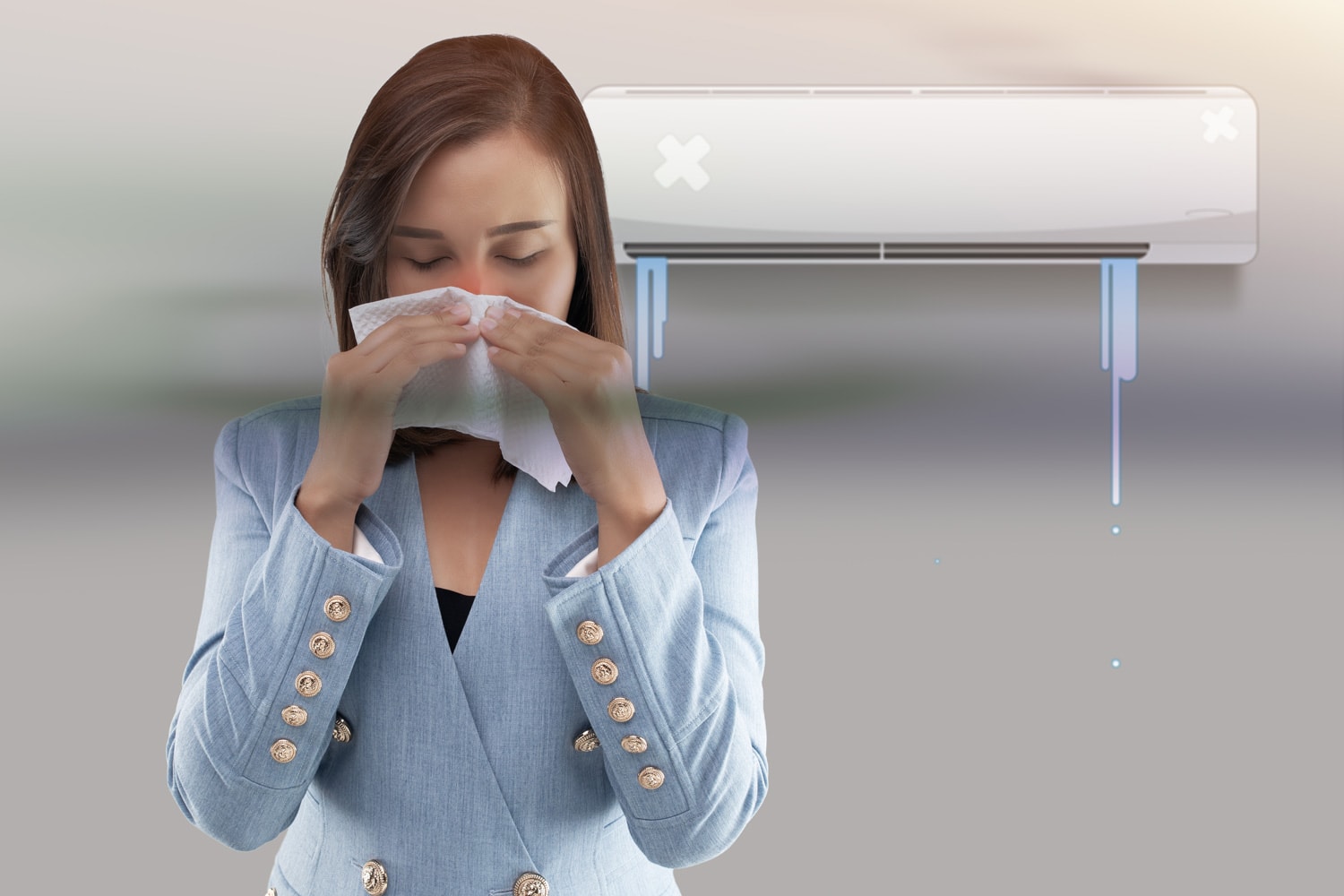
The HVAC system loses its efficiency to filter out allergens if it does not undergo routine maintenance. As a result, a dirty AC could possibly house allergens and further triggers seasonal allergies. So when people at home start having recurrent sneezing, watering of the eyes, nasal congestion, or runny nose, one thing to suspect is the condition of your AC.
When a range of substances (e.g., pollen, pet danders, dust, mold spores) accumulate in your air conditioning unit--particularly on its filters--a vicious cycle of allergic reactions begins. Worse thing occurs when asthma or difficulty of breathing attacks. Sometimes, turning off your AC is better.
How Often Should You Change Your AC Filter?
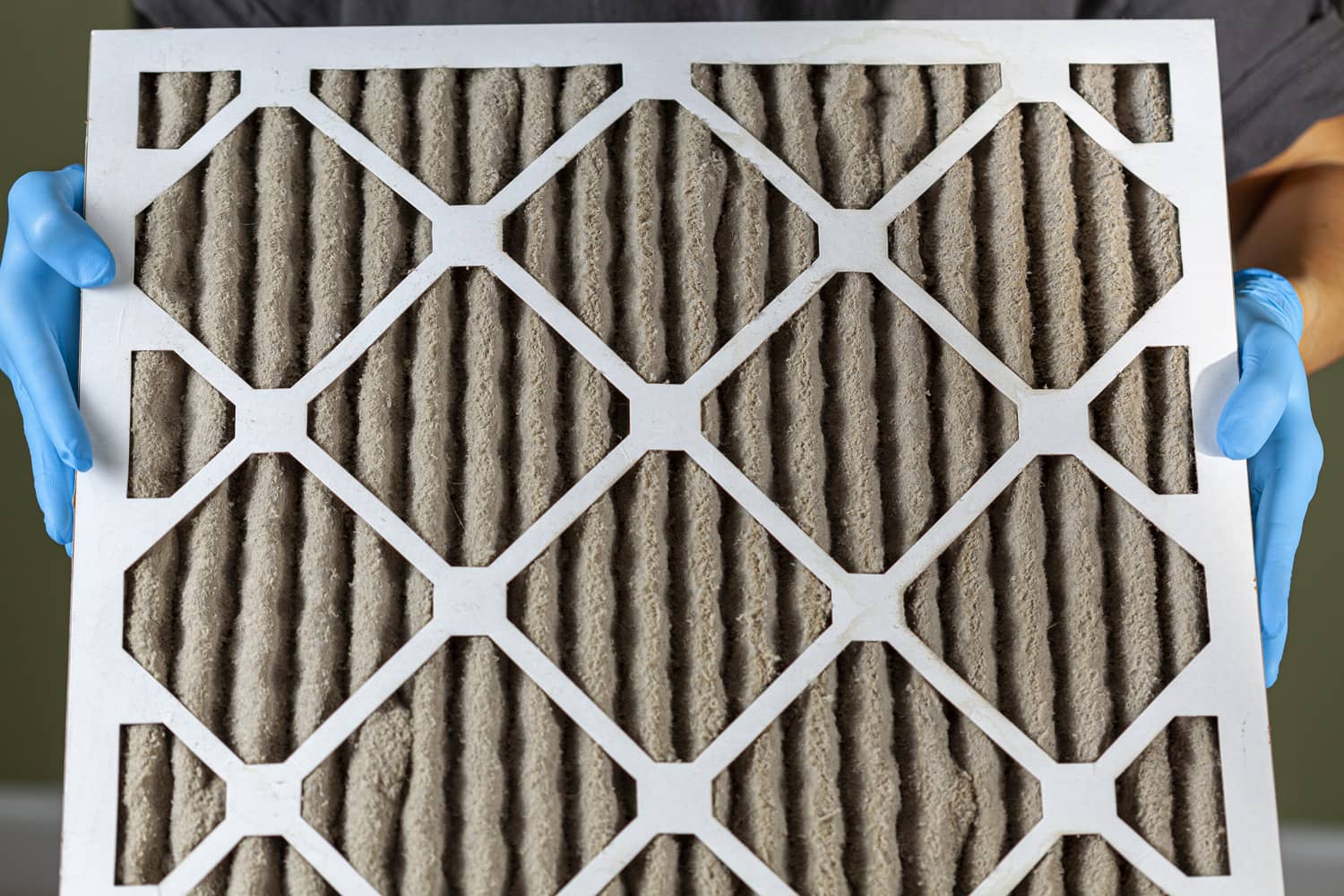
Depending on several factors such as the location of your home, the presence of pets in it, and the prevailing outside conditions, you should change your filters every 2 or 3 months. HVAC companies recommend houses with pets and those that are located in places with dry climates, and smoky and polluted air, to change filters every 60 days.
Consider changing filters every 20 to 45 days if there are people in the house who suffer from allergies or any respiratory conditions. The same number of days is recommended for households that have multiple furry pets.
While filters are primarily designed to protect the sensitive component of your AC, you have an option to install the correct types of filters that could best promote your respiratory health.
Types of HVAC Filters
The buildup of harmful air particles on filters can inhibit the function and optimal performance of the HVAC system. Aside from the health problem it could cause, dirty filters force the system to work harder; thus, your energy bill will soar higher.
To avoid respiratory problems and extra expenditures on your electric bill, know the type of filters you should have:
1. HEPA filter
An acronym for "high-efficiency particulate air," HEPA filters provide the most reliable level of protection against airborne particles. According to the United States Environmental Protection Agency, this mechanical filter can theoretically eliminate more than 99% of pollen, dust, mold, and even bacteria.
It has a Minimum Efficiency Reporting Values (MERV) rating between 17 and 20. That means it can capture particles as small as 0.3 microns. MERV ratings measure the ability of filters to stop air contaminants from passing through the system.
Planning to get an air purifier? Check out this air purifier with HEPA filter on Amazon.
2. Reusable/washable air filters
While HEPA filters are not washable, a reusable or washable air filter is easy to clean without the need to use any chemicals. It has a low MERV rating of between one and four. A certain model of it, however, has been engineered to capture 94% of dust and other allergens.
Also known as electrostatic air filters, they generate static electricity to make dust and molds positively charged. As a result, these contaminants attach to the filter media and the resulting cleaner air starts circulating in the house.
Check out this washable filter on Amazon
3. Flat-Paneled fiberglass filters
This is the most common and cheapest type of filter that has a very low MERV rating. It is made of layers of fiberglass with a metal grate as reinforcement. It allows maximum airflow but offers no efficient filtering at all because it can only trap less than 25% of air particles.
Note that the higher the MERV rating is, the greater the ability of a filter to screen out smaller particles but the lower the level of airflow it can produce.
4. Pleated Media Filter
With MERV ratings between 6 and 8, pleated media filters are reliable air purifiers made from layers of cotton, paper, or polyester folded into pleats. Sturdier and more efficient than fiberglass filters, a pleated media filter performs well in trapping airborne particles including hairs from pets and humans.
Unlike fiberglass filters, pleated filters strike a good balance between good airflow and efficient filtering. Moreover, the use of this type of filter can help cut down repair issues and expenses as it helps protect the HVAC system against clogging.
Check out these pleated filters on Amazon
How to Keep Indoor Air Clean
The air inside your house could also be polluted and be a threat to your family's health especially if someone has asthma or any respiratory disease. Indoor air pollution refers to dust, dirt, or gases lingering in the air inside buildings that could be detrimental to health when inhaled.
Air conditioning alone cannot guarantee safe air inside your home. So, here are some tips to improve indoor air:
Clean your air conditioner
In the previous parts of this post, we've focused largely on the importance of cleaning and replacing air filters regularly. This time, we'll walk you through the cleaning of your AC. Make sure to turn off the unit first!
1. Prepare the cleaning materials:
- warm water
- vacuum
- mild detergent
- cloth for wiping
- fin comb & nylon-bristle brush
- leather gloves
2. Clean the filter
Start with sanitizing the filters. Remove the front panel of your AC then take away the filters. Remove the dust and dirt buildup with a vacuum. Wash it then with warm water mixed with mild detergent for a thorough cleaning. Set it aside to dry completely.
3. Clean the grille and exterior
Before getting into the internal parts of your AC, wipe down the grille and exterior of it using warm and soapy water. Make sure to target the gaps where the air comes out. Leave them out to dry.
4. Clean the condenser coils

When cleaning windows and portable units, use a screwdriver to remove the protective grilles (side and top panels) to reach the coils. Use a soft brush or cloth to get rid of the dirt. Wear a pair of leather gloves to avoid cuts. If you see bent cooling fins, use a fin comb to straighten them.
Check out this condenser fin comb on Amazon.
Apply a foam cleaner onto the fins and brush it if the dirt buildup is heavy.
5. Empty the drip tray
Use a vacuum or cloth to remove the dirt and debris that accumulated on the tray. Lastly, see if anything is blocking the drain of the unit. Make sure it's not clogged so that water can smoothly exit from your AC.
Clean your air ducts
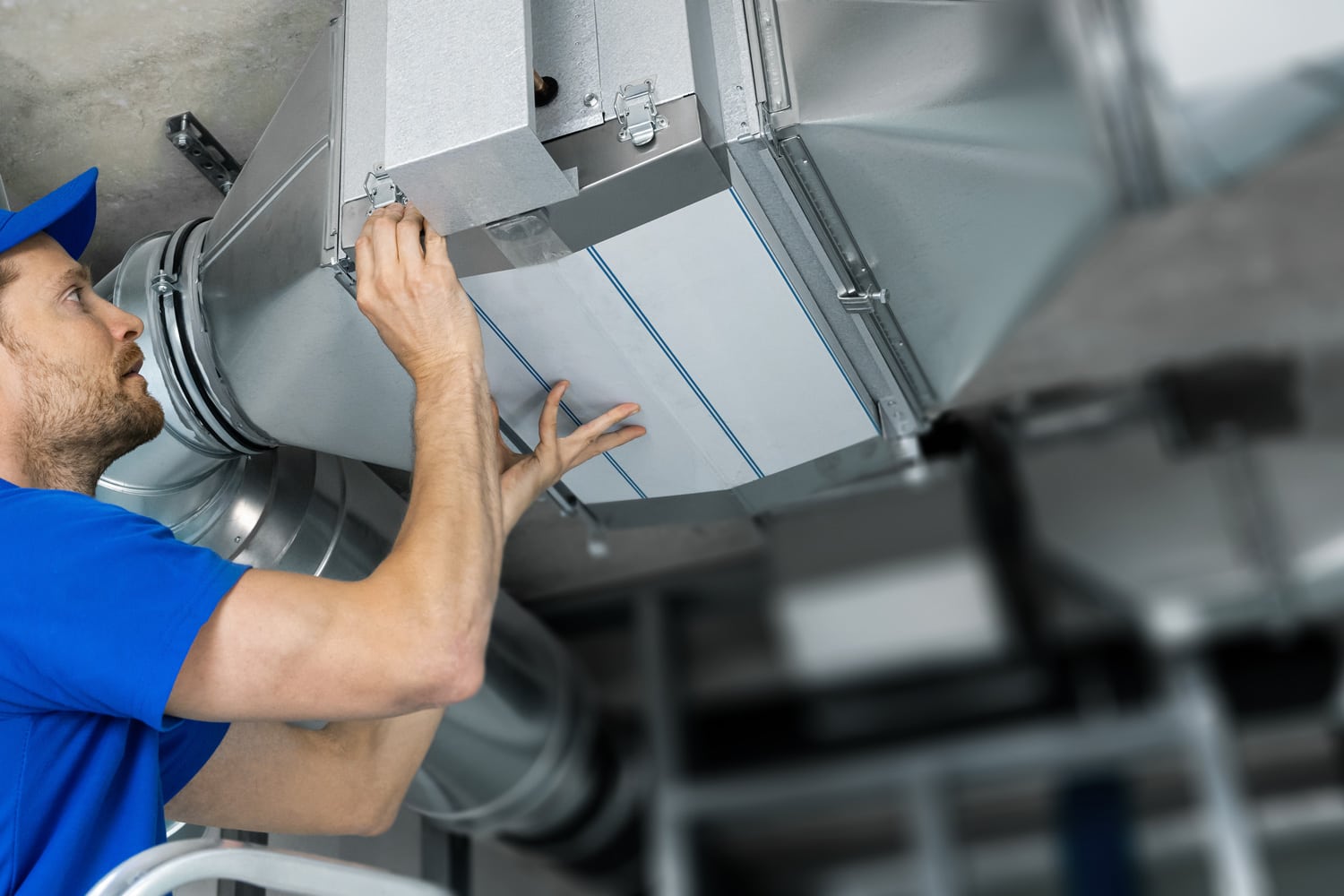
Air ducts can become a repository for pollutants over time which can significantly reduce the quality of air circulating throughout your house. Have it thoroughly cleaned by a professional
Reduce carpeting
The rough texture and twisted fibers of carpets can easily trap air particles. Give your carpet, including rugs, regular cleaning. Using a HEPA vacuum cleaner can greatly help eliminate dust mites and pet danders on your carpet.
Turn on your kitchen vents
Each time you turn on the stove to cook, it releases nitrogen dioxide. This gas can aggravate asthma when inhaled in high concentrations according to EPA. To prevent this, turn on your kitchen vents or open your kitchen windows.
Conclusion
A properly working HVAC system provides the ideal and comfortable climate inside your home no matter how harsh the outside environment is. The enjoyment of these benefits of course entails regular and thorough cleaning of the system and the indoor air, making sure pollen and similar allergens are out!
Did you find this post practically helpful? See these equally informative articles from us:
Does A Dyson Air Purifier Remove Dust?
How To Clean The Filter On Your Central AC




